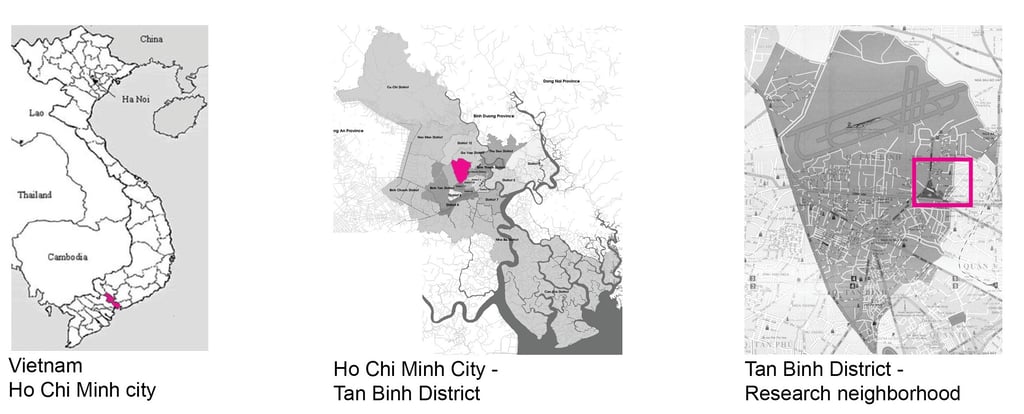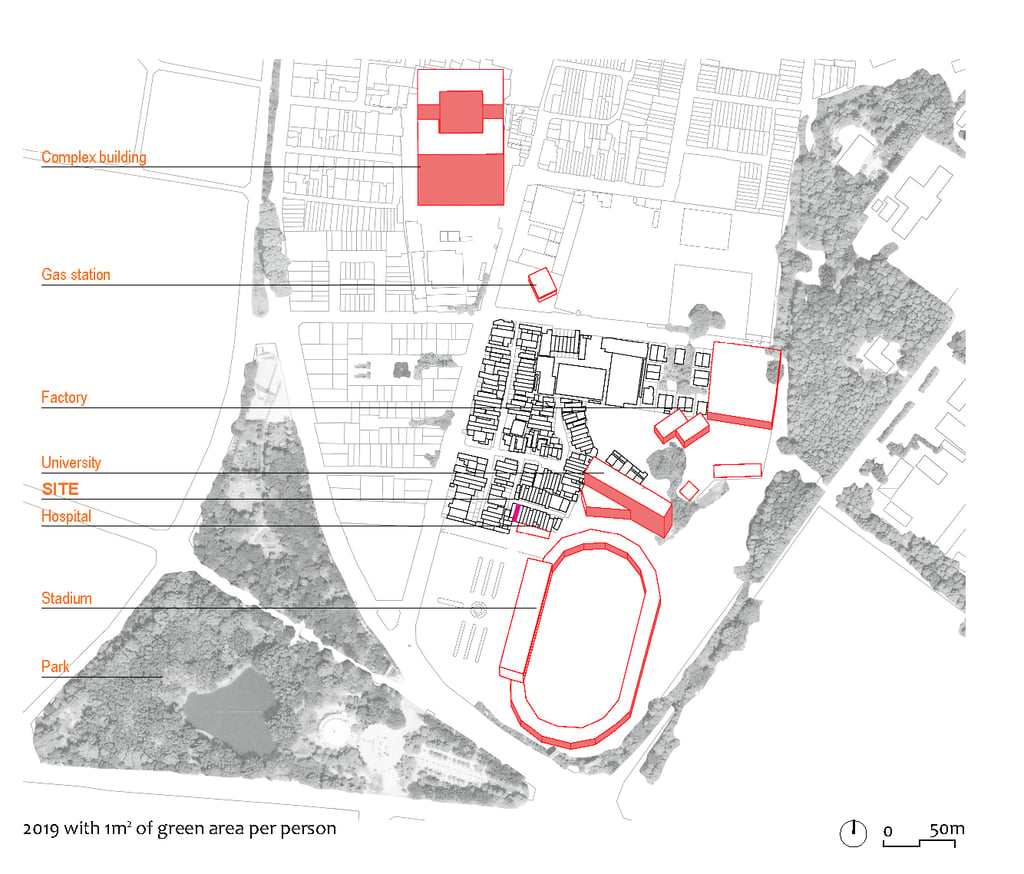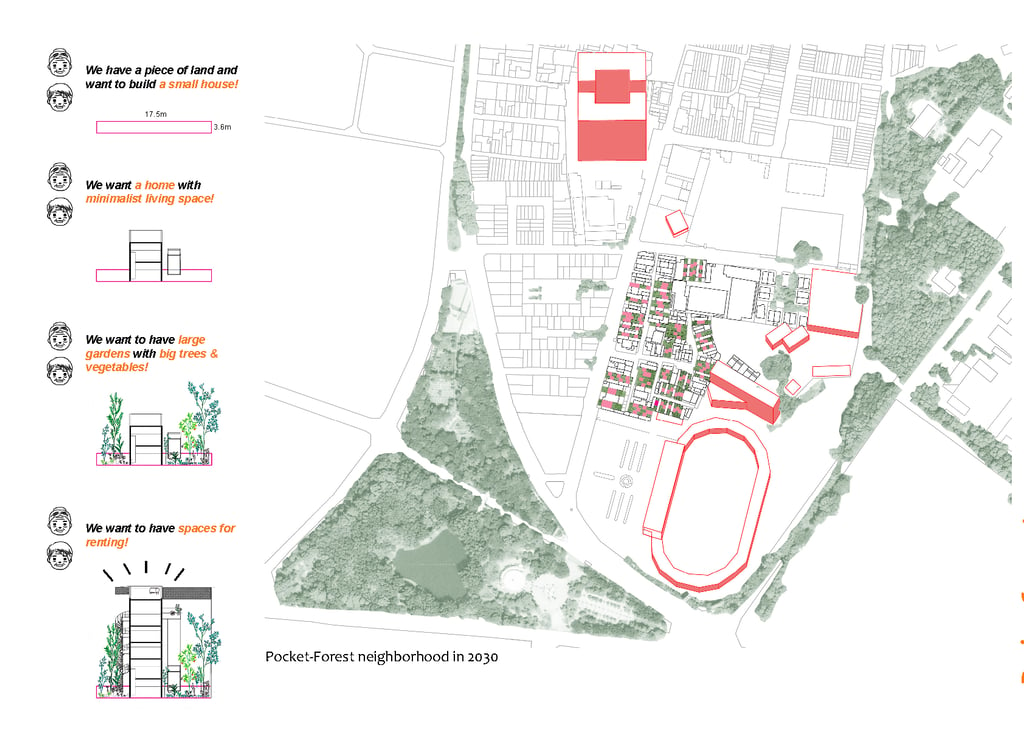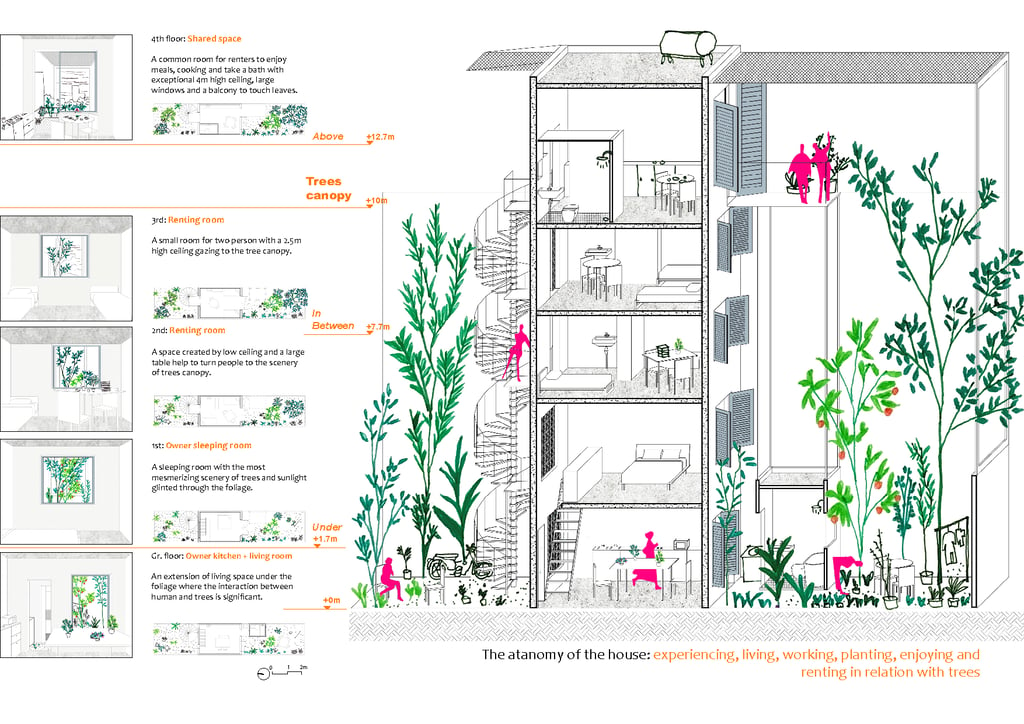Living & Renting with Pocket Forests


Author: Minh Quang Nguyen
Year: 2019
Location: Tan Binh, Ho Chi Minh, Vietnam
Type: Competition
Status: Published








Location
Existing neighborhood 2019: with 1m2 of green area
Pocket- Forest neighborhood in 2030
The anatomy of the house: experiencing, living, working, planting, enjoying and renting in relation with trees
The project aims to provide a new typology in order to meet the needs of the client. The client is an old married couple, Mr. Dat and Mrs. Tot both retired. The site is in an alleyway that cars rarely enter. The research neighborhood is a dense area close to a factory, a university, a hospital, a stadium, a park, and a complex building. The demand for renting places is rising. Thus, the client wants to have a house that they can live in and rent. Since they do not need a large living space, the idea is to give them a minimal house in between two large gardens. The front garden works as a transitional space between the alley and house, public and private, living and renting. A spiral staircase gives separate access for renters. The back garden functions as an extension of the living space where the client can have dinner, dry clothes, and grow vegetables under the tree canopy. The height of floors is due to their functions and in relation to the tree canopy.
The house can be a pilot project to push for housing development in the area. Each year, 2% of houses are changed. Therefore, in 2030, 20% of houses can be replaced to create a Pocket-Forest neighborhood. The idea will help to solve the lack of trees (1 m2/person) in HCM City in 2030 with 24 million people. Furthermore, the pocket-forest neighborhood concept can contribute to reducing the consequences of climate change not only in the city but also on a global scale


